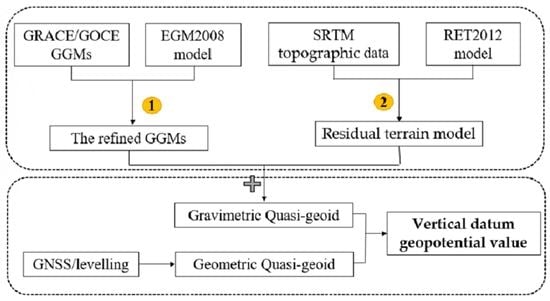The Refined Gravity Field Models for Height System Unification in China
Abstract
:1. Introduction
2. Materials and Methods
2.1. Materials
2.1.1. GNSS/LEVELING Data
2.1.2. Global Gravity Field Models (GFMs)
| Models | d/o | Data | Tide System | Reference |
|---|---|---|---|---|
| EGM2008 | 2160 | S(Grace), G, A | Tide-free | [41] |
| GO_CONS_GCF_2_TIM_R5 | 280 | S(Goce) | Tide-free | [42] |
| GO_CONS_GCF_2_TIM_R6 | 300 | S(Goce) | Zero-Tide | [43] |
| GO_CONS_GCF_2_DIR_R5 | 300 | S(Goce, Grace, Lageos) | Tide-free | [44] |
| GO_CONS_GCF_2_DIR_R6 | 300 | S(Goce, Grace, Lageos) | Tide-free | [45] |
2.1.3. Topographic Data
2.2. Methods for Determining the Height Datum Geopotential Value
3. Results
3.1. Spectral Accuracy Evaluation for GFMs
3.2. The Omission Errors for Satellite-Only GFMs
3.3. The Refined GFMs Obtained by the Spectral Expansion Approach
3.4. Determination for the Geopotential Value of Chinese Height Datum
4. Discussion
5. Conclusions
Author Contributions
Funding
Institutional Review Board Statement
Informed Consent Statement
Data Availability Statement
Acknowledgments
Conflicts of Interest
References
- Barzaghi, R.; De Gaetani, C.I.; Betti, B. The worldwide physical height datum project. Rend. Fis. Acc. Lincei. 2020, 31, 27–34. [Google Scholar] [CrossRef]
- Sánchez, L.; Ågren, J.; Huang, J.; Wang, Y.M.; Mäkinen, J.; Denker, H.; Ihde, J.; Abd-Elmotaal, H.; Ahlgren, K.; Amos, M.; et al. Advances in the realisation of the International Height Reference System. In Proceedings of the IUGG General Assembly, Rio de Janeiro, Brazil, 12–14 November 2019. [Google Scholar]
- Sánchez, L.; Barzaghi, R. Activities and plans of the GGOS Focus Area Unified Height System. In Proceedings of the IUGG XXVII General Assembly, Montreal, QC, Canada, 14 July 2019. [Google Scholar]
- Drewes, H. Reference Systems, Reference Frames, and the Geodetic Datum-Basic Considerations. In Observing Our Changing Earth; Sideris, M.G., Ed.; Springer: Perugia, Italy, 2009; Volume 133, pp. 3–9. [Google Scholar]
- Drewes, H.; Kuglitsch, F.l.; Adám, J.; Rózsa, S. The Geodesist’s Handbook 2016. J. Geod. 2016, 90, 907–1205. [Google Scholar] [CrossRef]
- Ihde, J.; Sánchez, L.; Barzaghi, R.; Drewes, H.; Foerste, C.; Gruber, T.; Liebsch, G.; Marti, U.; Pail, R.; Sideris, M. Definition and proposed realization of the international height reference system (IHRS). Surv. Geophys. 2017, 38, 549–570. [Google Scholar] [CrossRef]
- Sánchez, L.; Ågren, J.; Huang, J.; Wang, Y.M.; Mäkinen, J.; Pail, R.; Barzaghi, R.; Vergos, G.S.; Ahlgren, K.; Liu, Q. Strategy for the realisation of the International Height Reference System (IHRS). J. Geod. 2021, 95, 33. [Google Scholar] [CrossRef]
- Gerlach, C.; Rummel, R. Global height system unification with GOCE: A simulation study on the indirect bias term in the GBVP approach. J. Geod. 2013, 87, 57–67. [Google Scholar] [CrossRef]
- Amjadiparvar, B.; Rangelova, E.; Sideris, M.G. The GBVP approach for vertical datum unification: Recent results in North America. J. Geod. 2016, 90, 45–63. [Google Scholar] [CrossRef]
- Ophaug, V.; Gerlach, C. On the equivalence of spherical splines with least-squares collocation and stokes’s formula for regional geoid computation. J. Geod. 2017, 91, 1367–1382. [Google Scholar] [CrossRef]
- Sánchez, L.; Sideris, M.G. Vertical datum unification for the International Height Reference System (IHRS). Geophys. J. Int. 2017, 209, 570–586. [Google Scholar] [CrossRef]
- Ebadi, A.; Ardalan, A.; Karimi, R. The Iranian height datum offset from the GBVP solution and spirit-leveling/gravimetry data. J. Geod. 2019, 93, 1207–1225. [Google Scholar] [CrossRef]
- Zhang, P.; Bao, L.; Guo, D.; Wu, L.; Li, Q.; Liu, H.; Xue, Z.; Li, Z. Estimation of Vertical Datum Parameters Using the GBVP Approach Based on the Combined Global Geopotential Models. Remote Sens. 2020, 12, 4137. [Google Scholar] [CrossRef]
- Hayden, T.; Amjadiparvar, B.; Rangelova, E.; Sideris, M.G. Estimating Canadian vertical datum offsets using GNSS/levelling benchmark information and GOCE global geopotential models. J. Geod. Sci. 2012, 2, 257–269. [Google Scholar] [CrossRef] [Green Version]
- Gruber, T.; Gerlach, C.; Haagmans, R. Intercontinental height datum connection with GOCE and GPS-levelling data. J. Geod. Sci. 2012, 2, 270–280. [Google Scholar] [CrossRef]
- Gomez, M.E.; Pereira, R.A.D.; Ferreira, V.G.; Del Cogliano, D.; Luz, R.T.; de Freitas, S.R.C.; Farias, C.; Perdomo, R.; Tocho, C.; Lauria, E.; et al. Analysis of the Discrepancies between the Vertical Reference Frames of Argentina and Brazil. In IAG 150 Years; Rizos, C., Willis, P., Eds.; Springer International Publishing: Cham, Switzerland, 2015; Volume 143, pp. 289–295. [Google Scholar]
- Grombein, T.; Seitz, K.; Heck, B. On High-Frequency Topography-Implied Gravity Signals for a Height System Unification Using GOCE-based Global Geopotential Models. Surv. Geophys. 2016, 38, 443–477. [Google Scholar] [CrossRef]
- Li, J.; Chu, Y.; Xu, X. Determination of Vertical Datum Offset between the Regional and the global Height Datum. Acta Geod. Cartogr. Sin. 2017, 46, 1262–1273. [Google Scholar]
- Vergos, G.S.; Erol, B.; Natsiopoulos, D.A.; Grigoriadis, V.N.; Tziavos, I.N. Preliminary results of GOCE-based height system unification between Greece and turkey over marine and land areas. Acta. Geod. Geophys. 2018, 53, 61–79. [Google Scholar] [CrossRef]
- He, L.; Chu, Y.; Xu, X.; Zhang, T. Evaluation of the GRACE/GOCE Global Geopotential Model on estimation of the geopotential value for the China vertical datum of 1985. Chin. J. Geophys. 2019, 62, 2016–2026. [Google Scholar]
- Kelly, C.I.; Andam-Akorful, S.A.; Hancock, C.; Laari, P.; Ayer, J. Global gravity models and the Ghanaian Vertical Datum: Challenges of a proper definition. Surv. Rev. 2019, 53, 44–54. [Google Scholar] [CrossRef]
- Zhang, P.; Bao, L.; Guo, D.; Li, Q. Estimation of the height datum geopotential value of Hong Kong using the combined global geopotential models and GNSS/levelling data. Surv. Rev. 2021, 1–11. [Google Scholar] [CrossRef]
- Tapley, B.D.; Bettadpur, S.; Watkins, M.; Reigber, C. The gravity recovery and climate experiment: Mission overview and early results. Geophy. Res. Lett. 2004, 31, L09607. [Google Scholar] [CrossRef] [Green Version]
- Drinkwater, M.R.; Floberghagen, R.; Haagmans, R.; Muzi, D.; Popescu, A. GOCE: ESA’s first earth explorer core mission. In Earth Gravity Field from Space—From Sensors to Earth Science; Beutler, G., Ed.; Kluwer Academic Publishers: Bern, Switzerland, 2003; Volume 108, pp. 419–432. [Google Scholar]
- Hirt, C.; Gruber, T.; Featherstone, W.E. Evaluation of the first GOCE static gravity field models using terrestrial gravity, vertical defiections and EGM2008 quasigeoid heights. J. Geod. 2011, 85, 723–740. [Google Scholar] [CrossRef] [Green Version]
- Tziavos, I.N.; Vergos, G.S.; Grigoriadis, V.N.; Tzanou, E.A.; Natsiopoulos, D.A. Validation of GOCE/GRACE Satellite Only and Combined Global Geopotential Models over Greece in the Frame of the GOCESeaComb Project. In IAG 150 Years; Rizos, C., Willis, P., Eds.; Springer International Publishing: Cham, Switzerland, 2015; Volume 143, pp. 297–304. [Google Scholar]
- Gruber, T.; Visser, P.N.A.M.; Ackermann, C.; Hosse, M. Validation of GOCE gravity field models by means of orbit residuals and geoid comparisons. J. Geod. 2011, 85, 845–860. [Google Scholar] [CrossRef]
- Kaula, W.M. Theory of Satellite Geodesy; Blaisdell: Toronto, OH, USA, 1966. [Google Scholar]
- Forsberg, R. Modelling of the fine-structure of the geoid: Methods, data requirements and some results. Surv. Geophys. 1993, 14, 403–418. [Google Scholar] [CrossRef]
- Denker, H. Regional Gravity Field Modeling: Theory and Practical Results. In Sciences of Geodesy—II Innovations and Future Developments; Xu, G., Ed.; Springer: Heidelberg, Germany, 2013; pp. 185–291. [Google Scholar]
- Tscherning, C.C.; Rapp, R.H. Closed Covariance Expressions for Gravity Anomalies, Geoid Undulations, and Deflections of the Vertical Implied by Anomaly Degree Variance Models; Reports of the Department of Geodetic Science; The Ohio State University: Columbus, OH, USA, 1974. [Google Scholar]
- Wang, W.; Guo, C.; Li, D.; Zhao, H. Elevation change analysis of the national first order leveling points in recent 20 years. Acta Geod. Cartogr. Sin. 2019, 48, 1–8. [Google Scholar]
- Forsberg, R. A Study of Terrain Reductions, Density Anomalies and Geophysical Inversion Methods in Gravity Field Modelling; Scientific Report No.5; The Ohio State University: Columbus, OH, USA, 1984. [Google Scholar]
- Hirt, C.; Featherstone, W.E.; Marti, U. Combining EGM2008 and SRTM/DTM2006.0 residual terrain model data to improve quasigeoid computations in mountainous areas devoid of Gravity Data. J. Geod. 2010, 84, 557–567. [Google Scholar] [CrossRef] [Green Version]
- Yang, M.; Hirt, C.; Wu, B.; Deng, X.; Tsoulis, D.; Feng, W.; Wang, C.; Zhong, M. Residual Terrain Modelling: The Harmonic Correction for Geoid Heights. Surv. Geophys. 2022. [Google Scholar] [CrossRef]
- Hirt, C.; Bucha, B.; Yang, M.; Kuhn, M. A numerical study of residual terrain modelling (RTM) techniques and the harmonic correction using ultra-high degree spectral gravity modelling. J. Geod. 2019, 93, 1469–1486. [Google Scholar] [CrossRef]
- Yang, M.; Hirt, C.; Rexer, M.; Pail, P.; Yamazaki, D. The tree canopy effect in gravity forward modelling. Geophys. J. Int. 2019, 219, 271–289. [Google Scholar] [CrossRef]
- Altamimi, Z.; Rebischung, P.; Métivier, L.; Collilieux, X. ITRF2014: A new release of the International Terrestrial Reference Frame modeling nonlinear station motions. J. Geophys. Res. Solid Earth 2016, 121, 6109–6131. [Google Scholar] [CrossRef] [Green Version]
- Ekman, M. Impacts of geodynamic phenomena on systems for height and gravity. Bull. Géod. 1989, 63, 281–296. [Google Scholar] [CrossRef]
- Gruber, T.; Abrikosov, O.; Hugentobler, U. GOCE Standards. Prepared by the European GOCE Gravity Consortium EGG-C. 2014. Available online: https://earth.esa.int/documents/10174/1650485/GOCE_Standards (accessed on 1 June 2021).
- Pavlis, N.K.; Holmes, S.A.; Kenyon, S.C.; Factor, J.K. The development and evaluation of the earth gravitational model 2008(EGM2008). J. Geophys. Res. 2012, 117, B04406. [Google Scholar] [CrossRef] [Green Version]
- Brockmann, J.M.; Zehentner, N.; Höck, E.; Pail, R.; Loth, I.; Mayer-Gürr, T.; Schuh, W.-D. EGM_TIM_RL05: An independent geoid with centimeter accuracy purely based on the GOCE mission. Geophys. Res. Lett. 2014, 41, 8089–8099. [Google Scholar] [CrossRef]
- Brockmann, J.M.; Schubert, T.; Schuh, W.D. An Improved Model of the Earth’s Static Gravity Field Solely Derived from Reprocessed GOCE Data. Surv. Geophys. 2021, 42, 277–316. [Google Scholar] [CrossRef]
- Bruinsma, S.L.; Förste, C.; Abrikosov, O.; Lemoine, J.-M.; Marty, J.-C.; Mulet, S.; Rio, M.-H.; Bonvalot, S. ESA’s satellite-only gravity field model via the direct approach based on all GOCE data. Geophys. Res. Lett. 2014, 41, 7508–7514. [Google Scholar] [CrossRef] [Green Version]
- Förste, C.; Abrykosov, O.; Bruinsma, S.; Dahle, C.; König, R.; Lemoine, J.-M. ESA’s Release 6 GOCE Gravity Field Model by Means of the Direct Approach Based on Improved Filtering of the Reprocessed Gradients of the Entire Mission (GO_CONS_GCF_2_DIR_R6). Available online: https://doi.org/10.5880/ICGEM.2019.004 (accessed on 14 May 2021).
- Jarvis, A.; Reuter, H.I.; Nelson, A.; Guevara, E. Hole-Filled SRTM for the Globe Version 4. CGIAR-SXI SRTM 90 m Database. 2008. Available online: http://srtm.csi.cgiar.org (accessed on 14 April 2021).
- Tozer, B.; Sandwell, D.T.; Smith, W. Global Bathymetry and Topography at 15 Arc Sec: SRTM15+. Earth Space Sci. 2019, 6, 1847–1864. [Google Scholar] [CrossRef]
- Hirt, C.; Claessens, S.; Fecher, T.; Kuhn, M.; Pail, R.; Rexer, M. New ultrahigh-resolution picture of earth’s gravity field. Geophy. Res. Lett. 2013, 40, 4279–4283. [Google Scholar] [CrossRef] [Green Version]
- Hirt, C. RTM gravity forward-modeling using topography/bathymetry data to improve high-degree global geopotential models in the coastal zone. Mar. Geod. 2013, 36, 183–202. [Google Scholar] [CrossRef] [Green Version]
- Hirt, C.; Kuhn, M.; Featherstone, W.E.; Göttl, F. Topographic/isostatic evaluation of new-generation GOCE gravity field models. J. Geophys. Res. 2012, 117, B05407. [Google Scholar] [CrossRef] [Green Version]
- Moritz, H. Geodetic reference system 1980. J. Geod. 2000, 74, 128–133. [Google Scholar] [CrossRef]
- Sánchez, L.; Čunderlík, R.; Dayoub, N.; Mikula, K.; Minarechová, Z.; Šíma, Z.; Vatrt, V.; Vojtíšková, M. A conventional value for the geoid reference potential W0. J. Geod. 2016, 90, 815–835. [Google Scholar] [CrossRef]
- Yang, M.; Hirt, C.; Tenzer, R.; Pail, R. Experiences with the use of mass-density maps in residual gravity forward modelling. Stud. Geophys. Geod. 2018, 62, 596–623. [Google Scholar] [CrossRef]
- Nagy, D.; Papp, G.; Benedek, J. The gravitational potential and its derivatives for the prism. J. Geod. 2000, 74, 552–560. [Google Scholar] [CrossRef]
- Kotsakis, C.; Katsambalos, K.; Ampatzidis, D. Estimation of the zero-height geopotential level W0 in a local vertical datum from inversion of co-located GPS, leveling and geoid heights: A case study in the Hellenic islands. J. Geod. 2012, 86, 423–439. [Google Scholar] [CrossRef]
- Gruber, T.; Willberg, M. Signal and error assessment of GOCE based high resolution gravity field models. J. Geod. Sci. 2019, 9, 71–86. [Google Scholar] [CrossRef]
- Vu, D.T.; Bruinsma, S.; Bonvalot, S.; Remy, D.; Vergos, G.S. A Quasigeoid-Derived Transformation Model Accounting for Land Subsidence in the Mekong Delta towards Height System Unification in Vietnam. Remote Sens. 2020, 12, 817. [Google Scholar] [CrossRef] [Green Version]
- Voigt, C.; Denker, H. Validation of GOCE gravity field models in Germany. In Assessment of GOCE Geopotential Models; Huang, J., Reguzzoni, M., Gruber, T., Eds.; Newton’s Bulletin: Heidelberg, Germany, 2015; pp. 37–48. [Google Scholar]
- Hofmann-Wellenhof, B.; Moritz, H. Physical Geodesy; Springer: Wien, WI, USA, 2006. [Google Scholar]
- Ustun, A.; Abbak, R. On global and regional spectral evaluation of global geopotential models. J. Geophys. Eng. 2010, 7, 369. [Google Scholar] [CrossRef]
- Forsberg, R.; Tscherning, C.C. Topographic effects in gravity field modelling for BVP. In Geodetic Boundary Value Problems in View of the One Centimeter Geoid; Sansó, F., Rummel, R., Eds.; Springer: Heidelberg, Germany, 1997; pp. 241–272. [Google Scholar]
- Förste, C.; Bruinsma, S.L.; Abrykosov, O.; Lemoine, J.-M.; Marty, J.C.; Flechtner, F.; Balmino, G.; Barthelmes, F.; Biancale, R. EIGEN-6C4 The Latest Combined Global Gravity Field Model Including GOCE Data up to Degree and Order 2190 of GFZ Potsdam and GRGS Toulouse; GFZ Data Services: Potsdam, Germany, 2014. [Google Scholar] [CrossRef]
- Gilardoni, M.; Reguzzoni, M.; Sampietro, D. GECO: A global gravity model by locally combining GOCE data and EGM2008. Stud. Geophys. Geod. 2016, 60, 228–247. [Google Scholar] [CrossRef]
- Liang, W.; Xu, X.; Li, J.; Zhu, G. The determination of an ultrahigh gravity field model SGG-UGM-1 by combining EGM2008 gravity anomaly and GOCE observation data. Acta Geod. Cartogr. Sin. 2018, 47, 425–434. [Google Scholar]
- Liang, W.; Li, J.; Xu, X.; Zhang, S.; Zhao, Y. A High-Resolution Earth’s Gravity Field Model SGG-UGM-2 from GOCE, GRACE, Satellite Altimetry, and EGM2008. Engineering 2020, 6, 860–878. [Google Scholar] [CrossRef]
- Pail, R.; Fecher, T.; Barnes, D.; Factor, J.F.; Holmes, S.A.; Gruber, T.; Zingerle, P. Short note: The experimental geopotential model xgm2016. J. Geod. 2018, 92, 443–451. [Google Scholar] [CrossRef]
- Zingerle, P.; Pail, R.; Gruber, T.; Oikonomidou, X. The combined global gravity field model XGM2019e. J. Geod. 2020, 94, 66. [Google Scholar] [CrossRef]
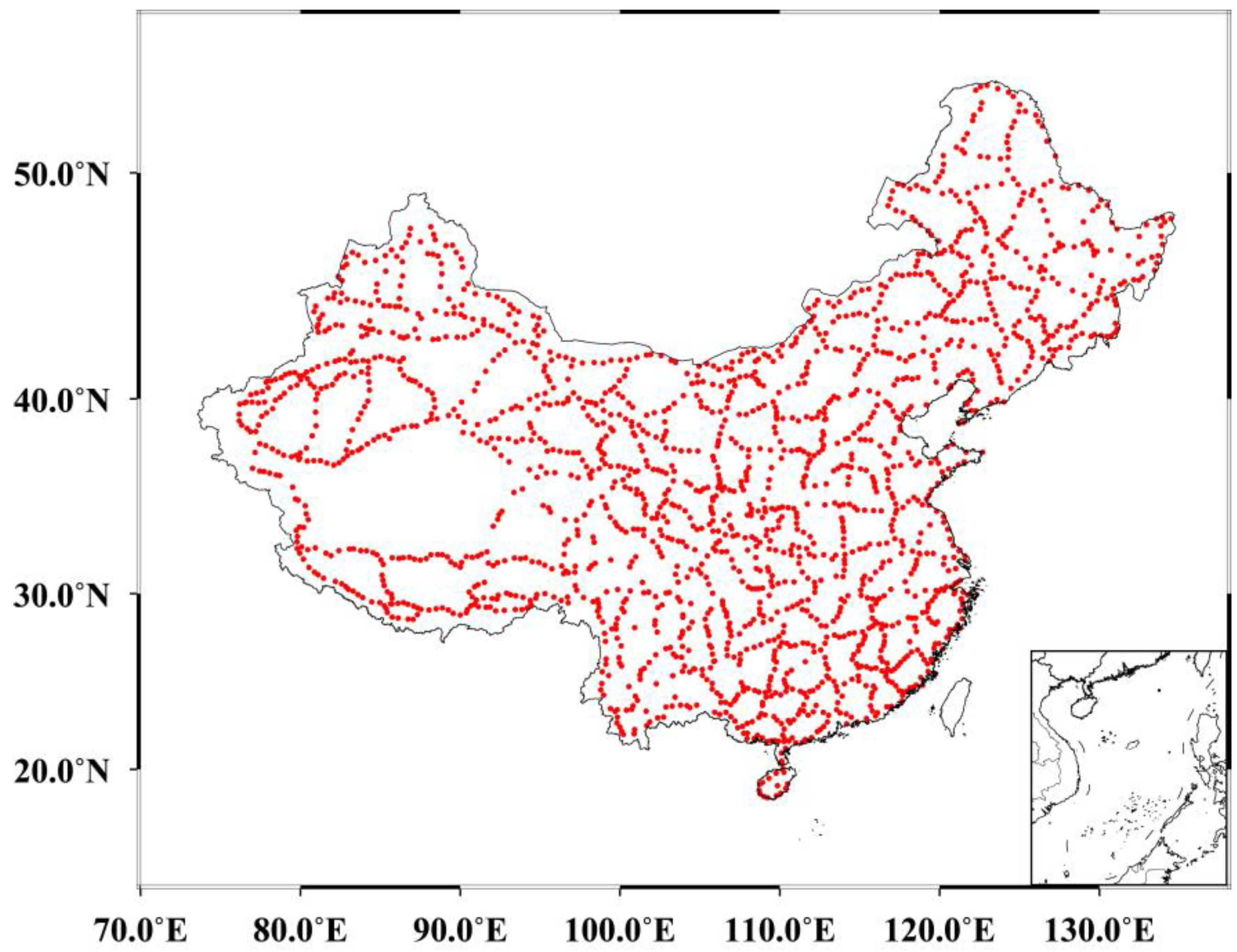
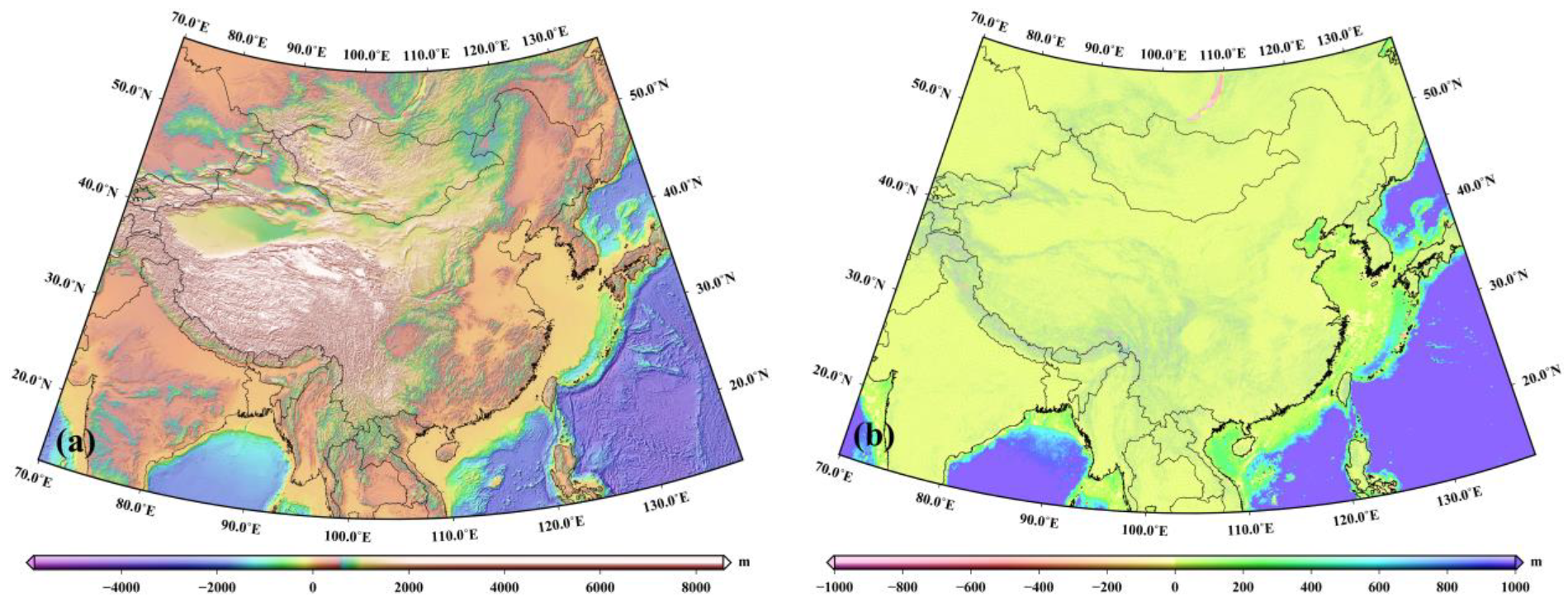
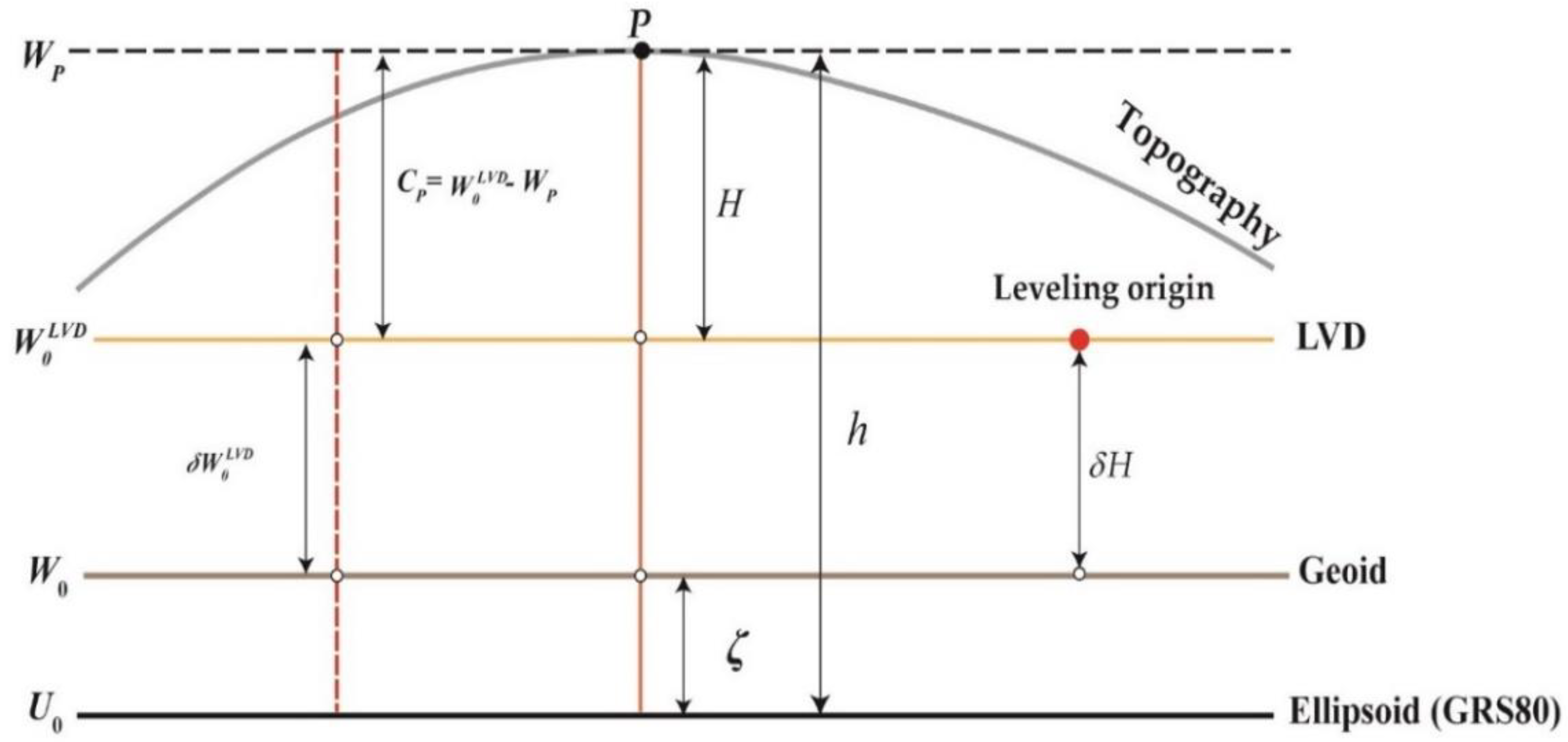
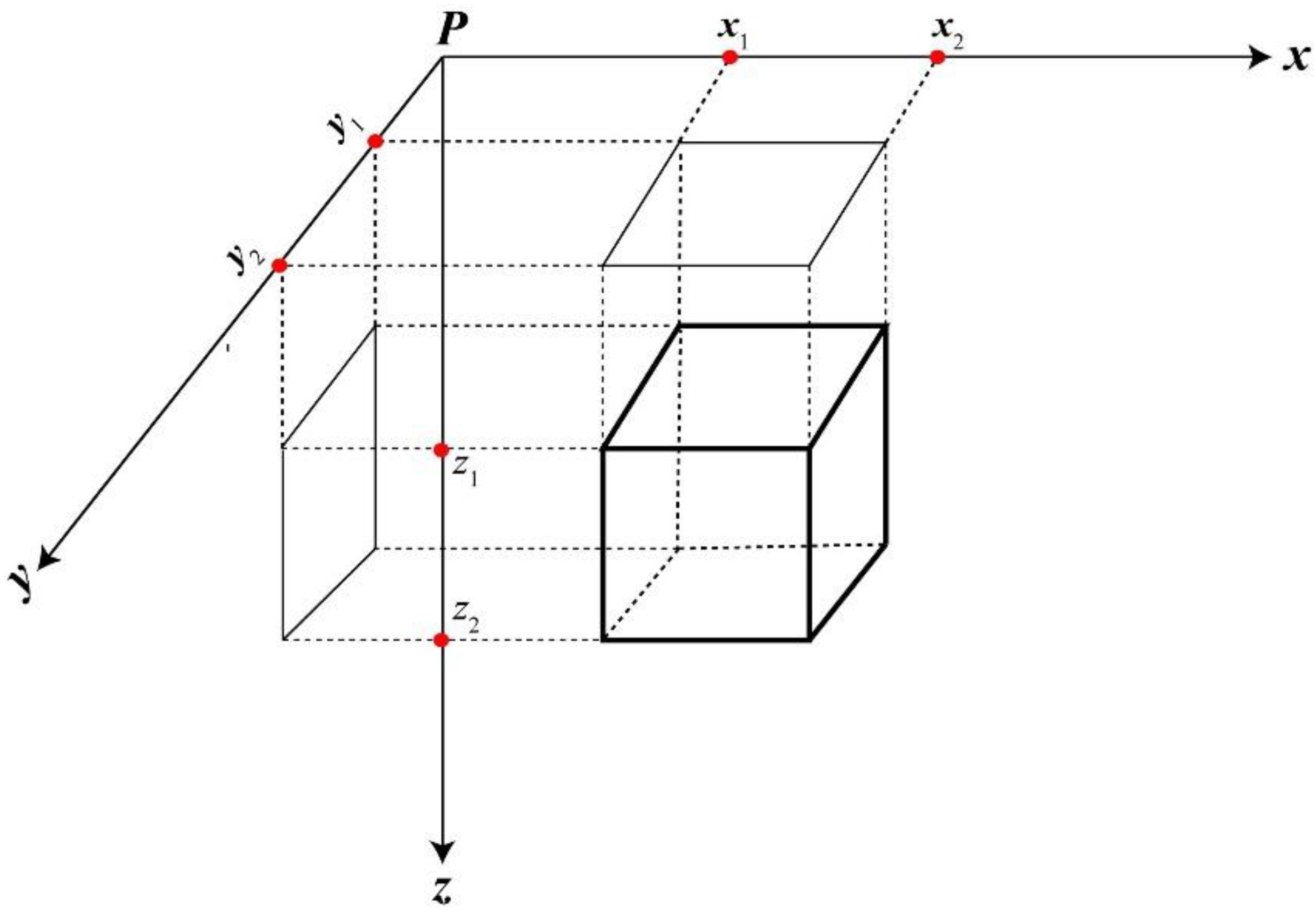
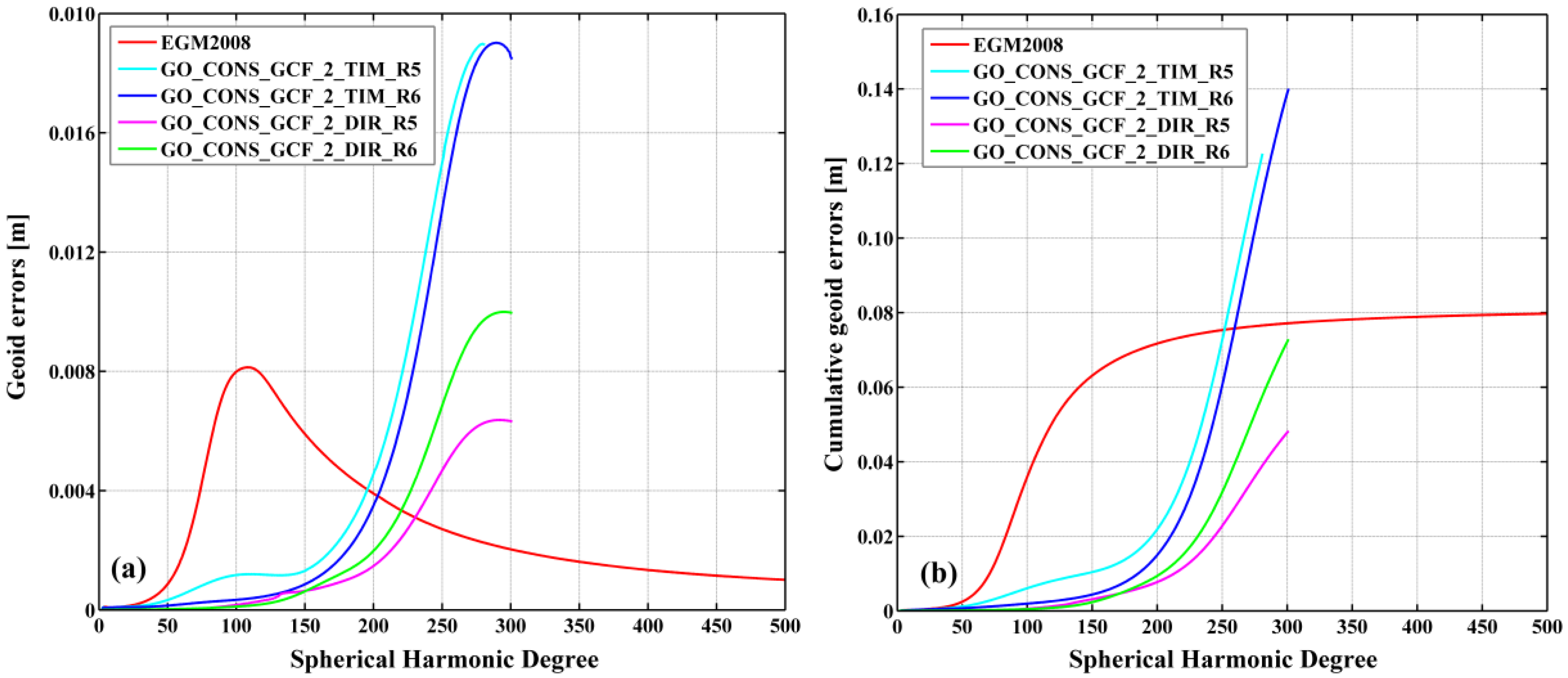

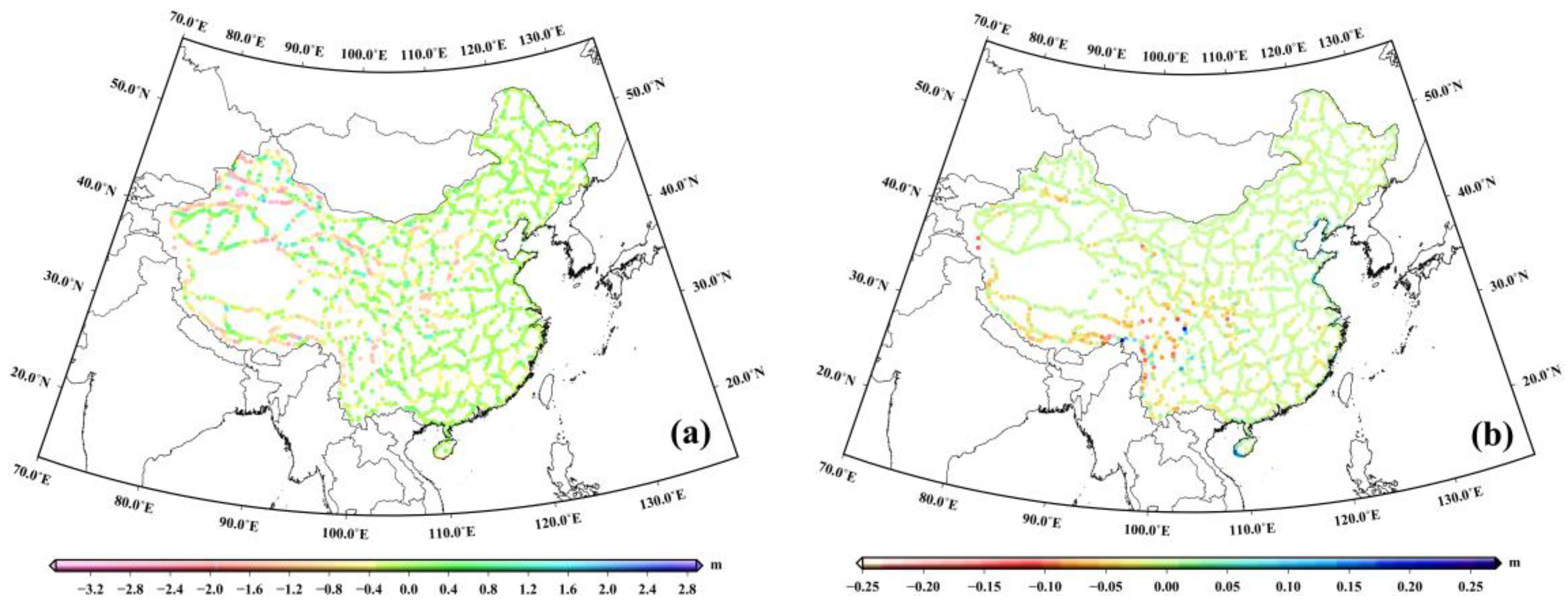
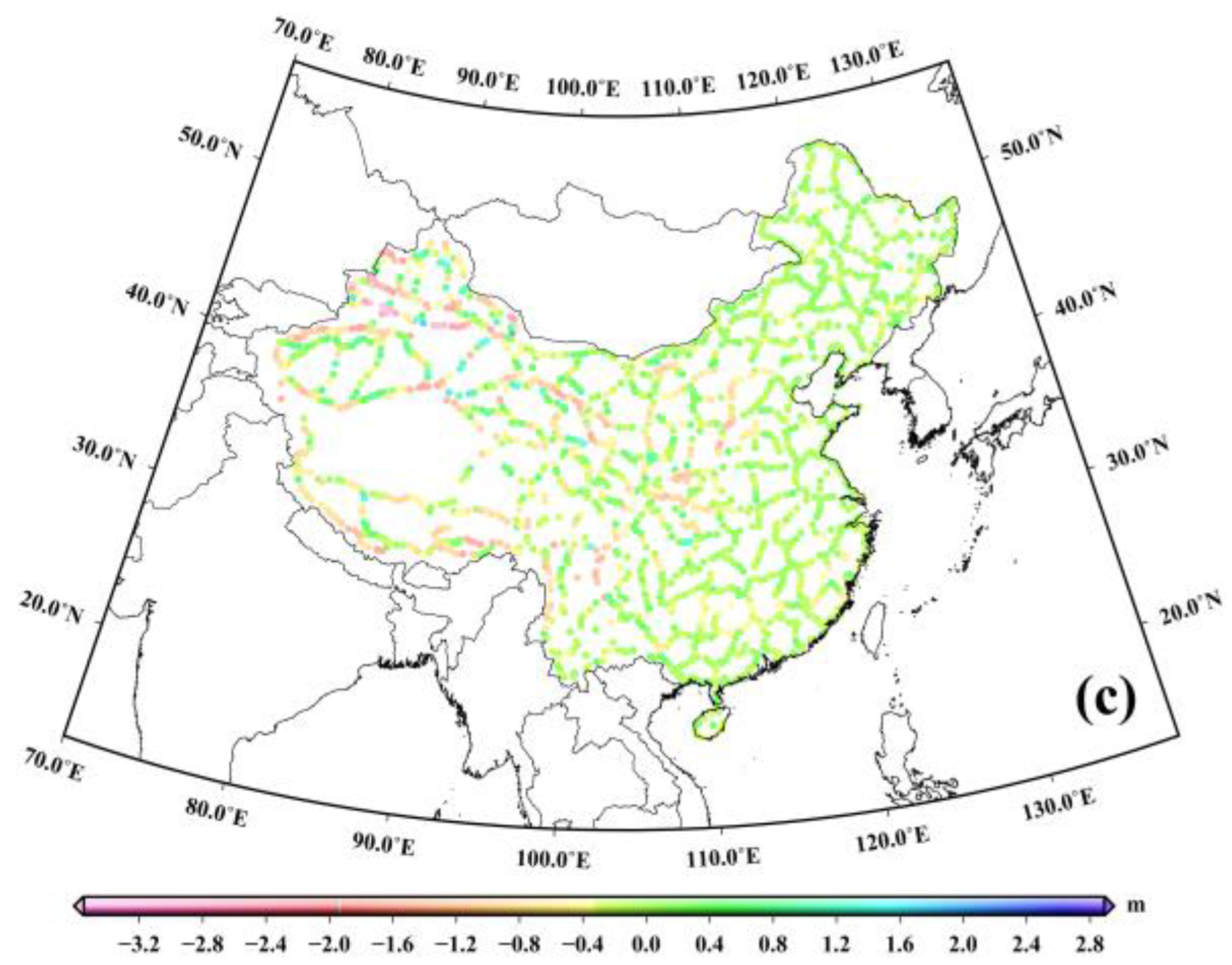
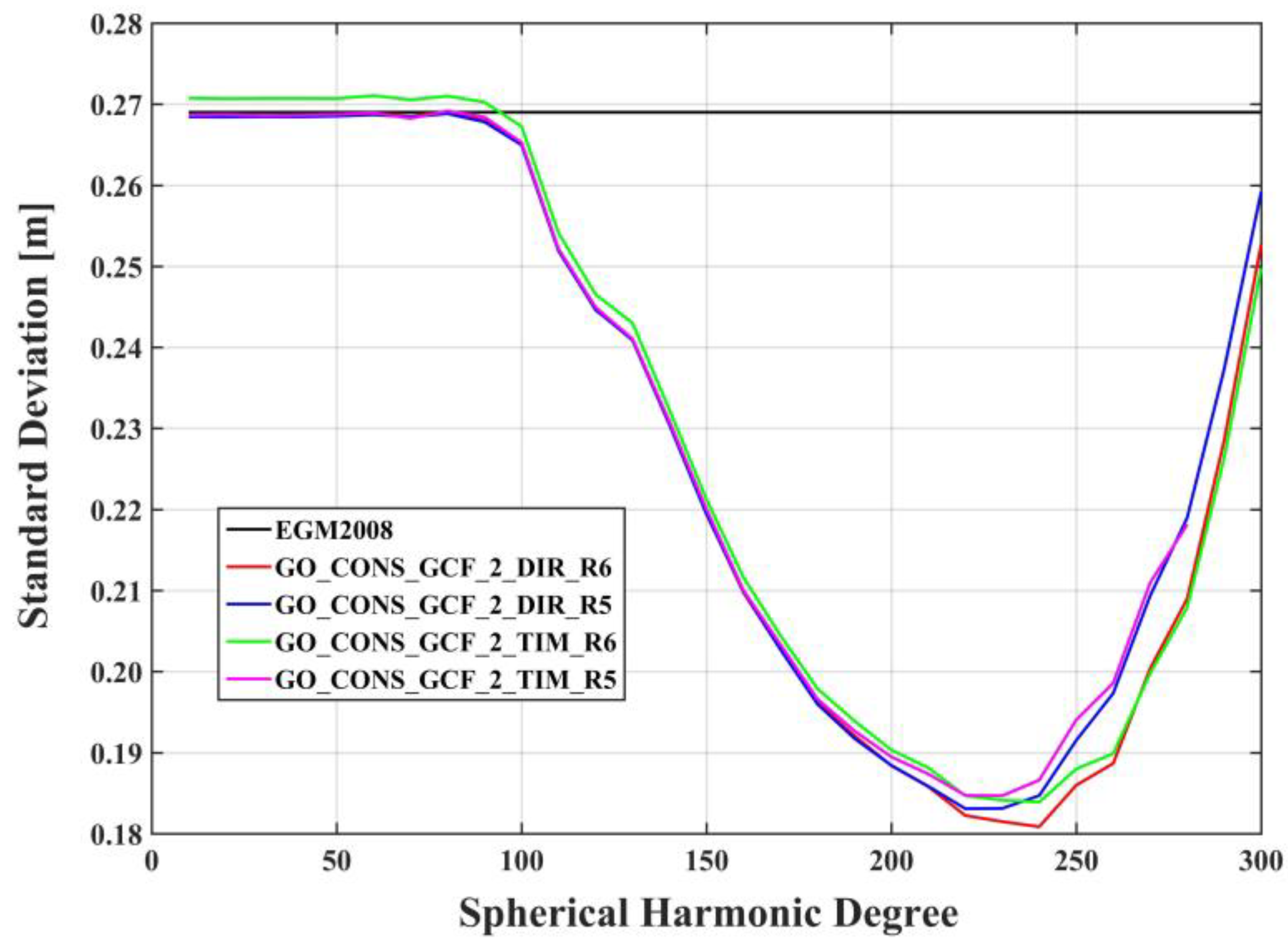
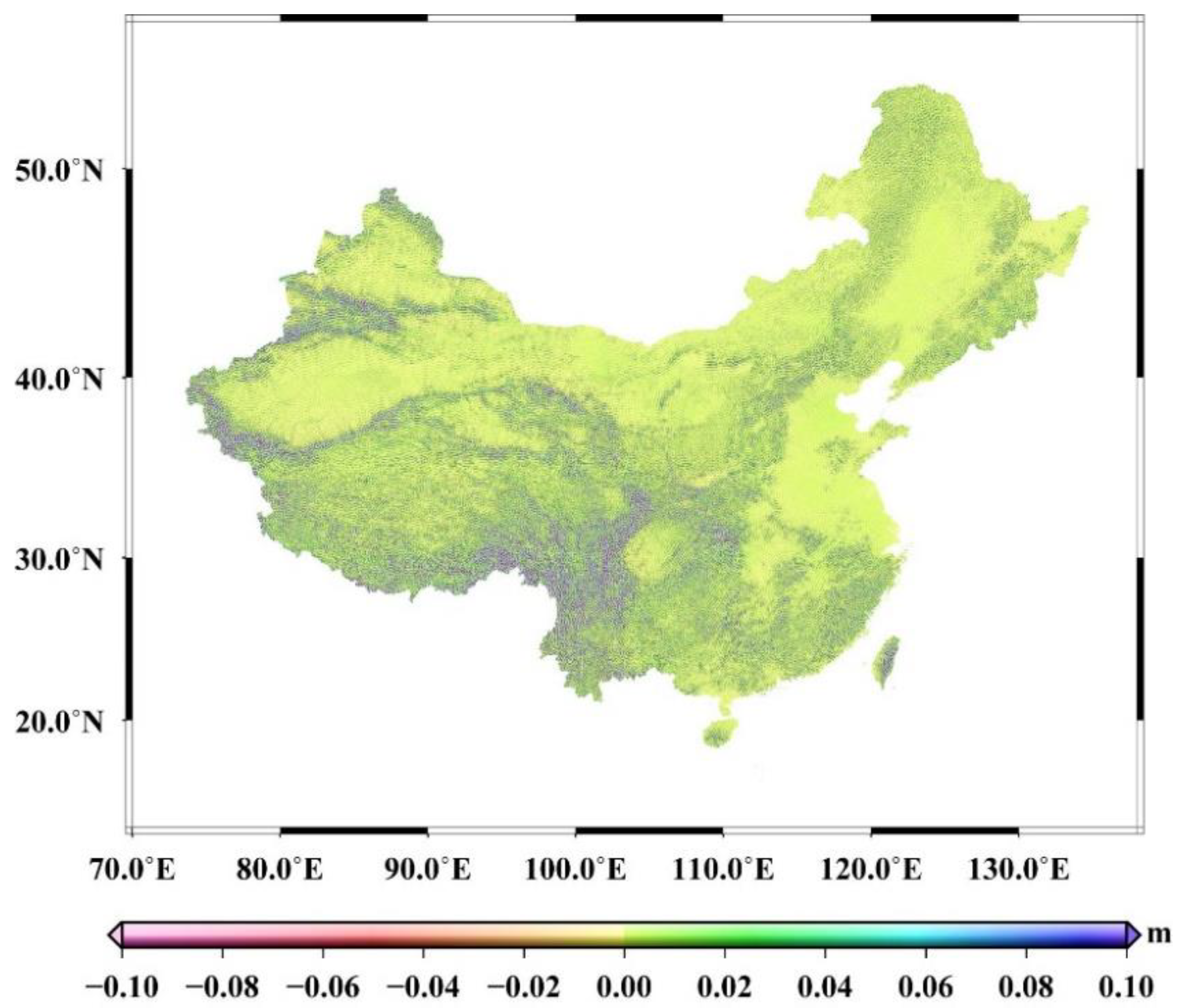
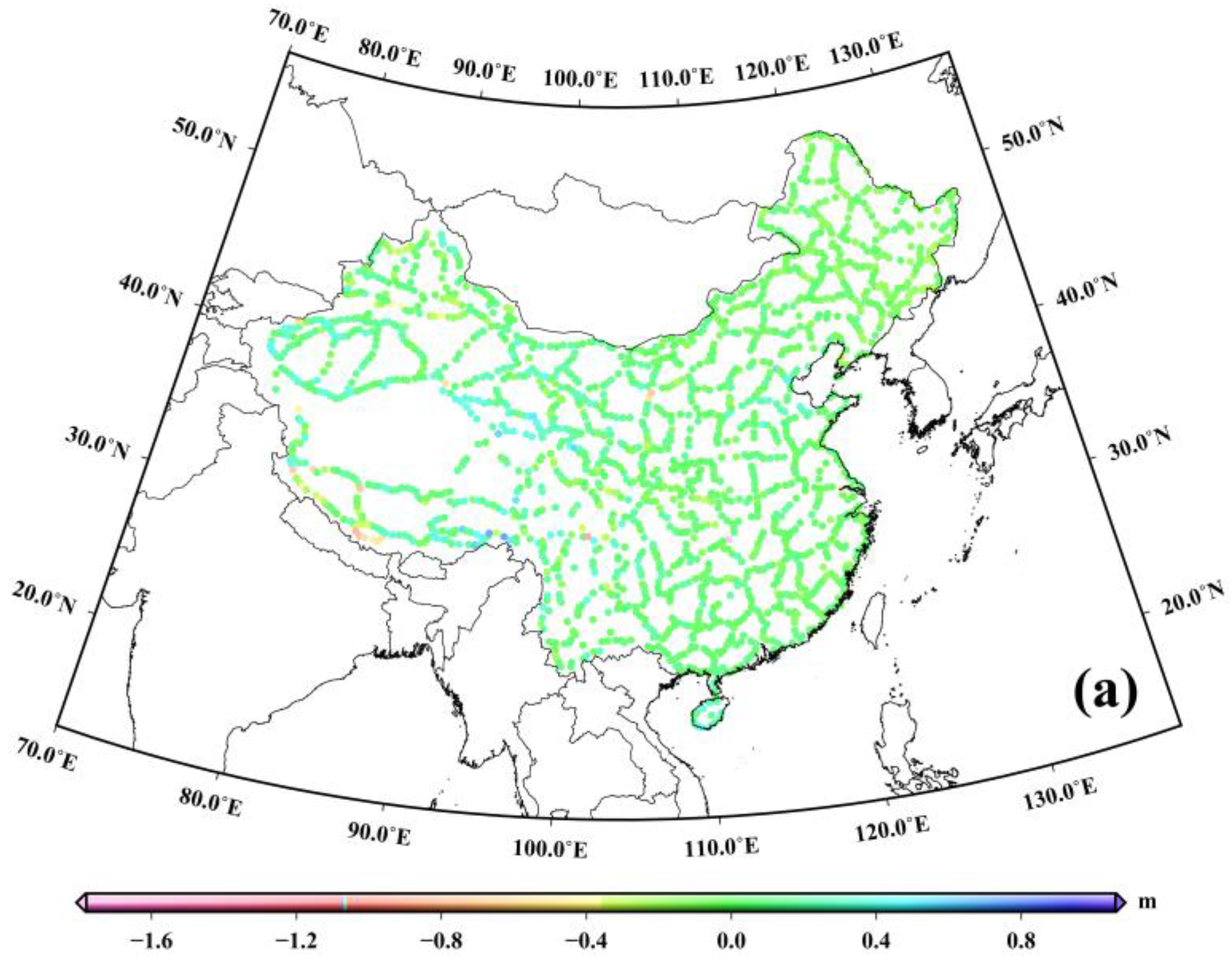

| Omission Errors (m) | Max | Min | Mean | Std |
|---|---|---|---|---|
| 2.885 | −3.529 | −0.215 | 0.601 | |
| 0.264 | −0.248 | −0.006 | 0.027 | |
| 2.892 | −3.548 | −0. 221 | 0.602 |
| Models | Max | Min | Mean | STD |
|---|---|---|---|---|
| EGM2008 | 1.162 | −2.079 | 0.061 | 0.269 |
| DIR_R6 | 2.624 | −2.475 | −0.114 | 0.391 |
| DIR_R5 | 2.536 | −2.507 | −0.112 | 0.396 |
| TIM_R6 | 2.578 | −2.457 | −0.107 | 0.391 |
| TIM_R5 | 2.549 | −2.432 | −0.114 | 0.400 |
| TIM_R5_EGM2008 | 1.044 | −1.804 | 0.045 | 0.185 |
| TIM_R6_EGM2008 | 1.099 | −1.806 | 0.050 | 0.184 |
| DIR_R5_EGM2008 | 1.007 | −1.689 | 0.048 | 0.183 |
| DIR_R6_EGM2008 | 1.072 | −1.787 | 0.044 | 0.181 |
| EGM2008_RTM | 1.256 | −1.981 | 0.068 | 0.261 |
| TIM_R5_EGM2008_RTM | 1.042 | −1.803 | 0.053 | 0.178 |
| TIM_R6_EGM2008_RTM | 1.097 | −1.806 | 0.058 | 0.177 |
| DIR_R5_EGM2008_RTM | 1.005 | −1.688 | 0.056 | 0.176 |
| DIR_R6_EGM2008_RTM | 1.069 | −1.787 | 0.052 | 0.173 |
| Models | Max | Min | Mean | STD |
|---|---|---|---|---|
| EIGEN-6C4 | 1.007 | −1.696 | 0.048 | 0.187 |
| GECO | 1.579 | −1.703 | 0.041 | 0.223 |
| SGG-UGM−1 | 1.003 | −1.671 | 0.052 | 0.194 |
| SGG-UGM−2 | 1.003 | −1.704 | 0.051 | 0.191 |
| XGM2019 | 1.705 | −1.737 | 0.081 | 0.213 |
| XGM2016 | 1.016 | −1.757 | −0.020 | 0.214 |
| Model | Scenarios | Max | Min | Mean |
|---|---|---|---|---|
| DIR_R6_EGM2008_RTM | Without-planar corrections | 62,636,870.86 | 62,636,842.93 | 62,636,852.89 ± 1.75 |
| With-planar corrections | 62,636,870.88 | 62,636,843.31 | 62,636,853.29 ± 1.69 |
Publisher’s Note: MDPI stays neutral with regard to jurisdictional claims in published maps and institutional affiliations. |
© 2022 by the authors. Licensee MDPI, Basel, Switzerland. This article is an open access article distributed under the terms and conditions of the Creative Commons Attribution (CC BY) license (https://creativecommons.org/licenses/by/4.0/).
Share and Cite
Zhang, P.; Li, Z.; Bao, L.; Zhang, P.; Wang, Y.; Wu, L.; Wang, Y. The Refined Gravity Field Models for Height System Unification in China. Remote Sens. 2022, 14, 1437. https://doi.org/10.3390/rs14061437
Zhang P, Li Z, Bao L, Zhang P, Wang Y, Wu L, Wang Y. The Refined Gravity Field Models for Height System Unification in China. Remote Sensing. 2022; 14(6):1437. https://doi.org/10.3390/rs14061437
Chicago/Turabian StyleZhang, Panpan, Zhicai Li, Lifeng Bao, Peng Zhang, Yongshang Wang, Lin Wu, and Yong Wang. 2022. "The Refined Gravity Field Models for Height System Unification in China" Remote Sensing 14, no. 6: 1437. https://doi.org/10.3390/rs14061437
APA StyleZhang, P., Li, Z., Bao, L., Zhang, P., Wang, Y., Wu, L., & Wang, Y. (2022). The Refined Gravity Field Models for Height System Unification in China. Remote Sensing, 14(6), 1437. https://doi.org/10.3390/rs14061437





